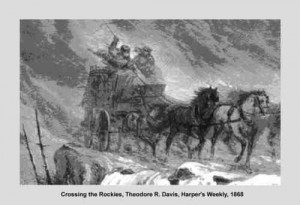Brief by Allen Best
Energy – September 2008 – Colorado Central Magazine
Investigation is underway into the possibility of creating a central heating system in Oak Creek, a small town about 20 miles south of Steamboat Springs. The specific proposal calls for burning wood from the dead and dying forests in northwest Colorado to produce heat and possibly electricity.
The town, created because of its coal deposits, is in the midst of an ironic transition. The local schools are replacing their coal boilers with a biomass boiler. That boiler is supplemented by a geoexchange heating system.
Townspeople and businesses, however, are on individual heating systems that use propane. The price of propane has increased from about $1 per gallon during the 1990s to $2.60 per gallon by the end of last winter.
Enter Mark Mathis. Last year he constructed a plant in Kremmling, a former logging town about 50 miles away. His company, Confluence Energy, takes dead trees and grinds them up into pellets; it shipped its first load in January.
The Steamboat Pilot & Today explains that Mathis is now trying to persuade Oak Creek to convert to biomass for both heating and electrical production. His bottom-line argument is cost. Mathis estimated Oak Creek spends at least $2 million a year on propane to heat its homes and businesses. He claims that cost can be reduced to $500,000 by burning biomass pellets in a central burner.
The new infrastructure will cost a pretty penny. Mathis estimates $1.2 to $1.5 million for the central burner, and then $5 million for pipes to distribute the heat via hot water to individual homes and businesses.
There may be additional savings, he says, if carbon emissions are monetized, resulting in payments for efforts that result in reduced emission from forest fires.
Mathis estimates payback on investment at four years.
If Oak Creek were to do so, it would become the first town in the United States to go to biomass 100 percent.
Elsewhere in the world, full-blown biomass heating is not rare. A delegation from Vail visited Austrian facilities several years ago to study what could be relevant for Colorado. Nothing concrete, however, has come of it.
Biomass burners, however, are not infrequent in the United States. A biomass burner is used to heat a greenhouse in nearby Walden, a place of long, long winters. California’s Sierra Nevada also uses biomass to generate electricity, and is studying the feasibility of more expanded use.
One key issue still facing this fledgling industry in Colorado, and also other states, is the long-term supply. While Colorado currently has huge amounts of dead trees, the Forest Service so far has offered no assurances of long-term availability.


